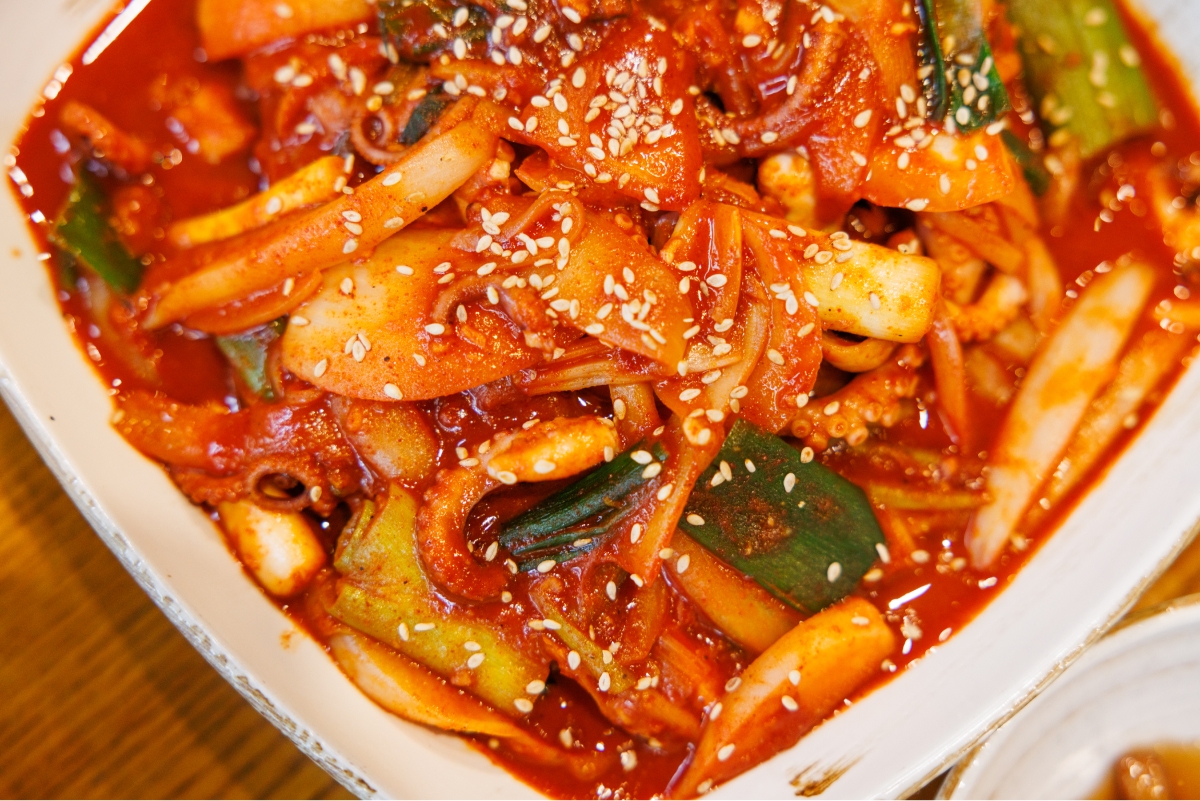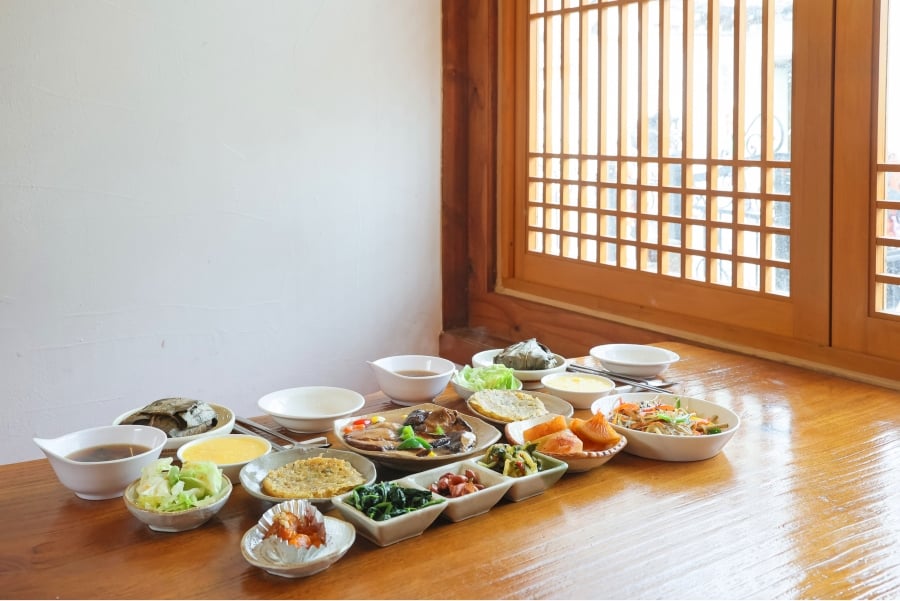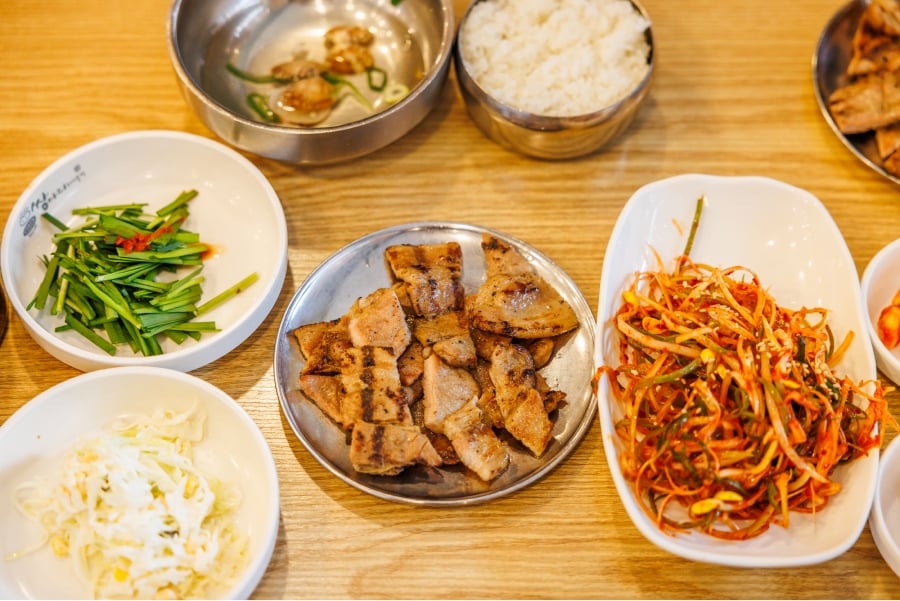The Science Behind Young Koreans’ Spicy Food Obsession
Young Koreans these days are raving about spicy food, and there’s a scientific basis behind this trend. Indulging in spicy dishes is seen as a way to relieve stress, as the stinging sensation, spiciness on the tongue, and the resulting sweating and watery eyes can trigger the release of adrenalin and endorphins, which have a calming effect on the body.
The Science of Spicy Food
The spiciness in food is caused by capsaicin, a compound that stimulates the sympathetic nerves, leading to the activation of the body’s stress response. This physiological reaction can help individuals cope with feelings of stress, anger, or sadness by providing a temporary distraction and a sense of relief.
Recommended Spicy Korean Dishes
Young Koreans have recommended the following spicy Korean dishes that are sure to make your eyes tear up and your nose go runny, but are oh-so-delicious at the same time:
- Spicy Korean Fried Chicken
- Kimchi Stew (Kimchi Jjigae)
- Spicy Rice Cakes (Tteokbokki)
- Spicy Pork Bulgogi
- Spicy Seafood Stew (Jjamppong)
Whether you’re looking to relieve stress or simply indulge in some
Discovering the Wonders of Korean Octopus Dishes
While many countries have seafood dishes that are beloved, the long-legged octopus has often been viewed with trepidation in Europe, being dubbed the “devil of the sea.” However, in Korea, this remarkable creature is celebrated as a stamina-boosting, healthy food that is said to even “raise an unconscious bull back to its feet.” The long-legged octopus is rich in taurine, making it a fantastic ingredient for dishes that provide a natural energy boost.
Koreans have embraced the octopus in a variety of delectable dishes, such as Octopus Hot Pot, Chopped Live Octopus, Octopus Soup, and the ever-popular Stir-fried Octopus. The Stir-fried Octopus, in particular, is a spicy and zesty delight, featuring the long-legged octopus, green onion, onion, and carrots, all cooked in a sauce of Red Chili Paste and sugar. This dish is a beloved choice for drinking occasions, and can be paired with plain noodles or Chilled Bean Sprout Soup to help tame the heat for those who prefer a milder experience. For a heartier meal, Spicy Octopus Bibimbap, made by mixing Stir-fried Octopus with rice, bean sprouts, sesame oil, and dried laver, is a fantastic option.
Whether you’re a seasoned spice-lover or new to the world of Korean cuisine, the vibrant and flavorful octopus dishes of Korea are sure to leave a lasting impression. Discover the best Stir-fried Octopus and other octopus delights at the top spots in town, and embark on a culinary adventure that will tantalize your taste buds and leave you craving more.
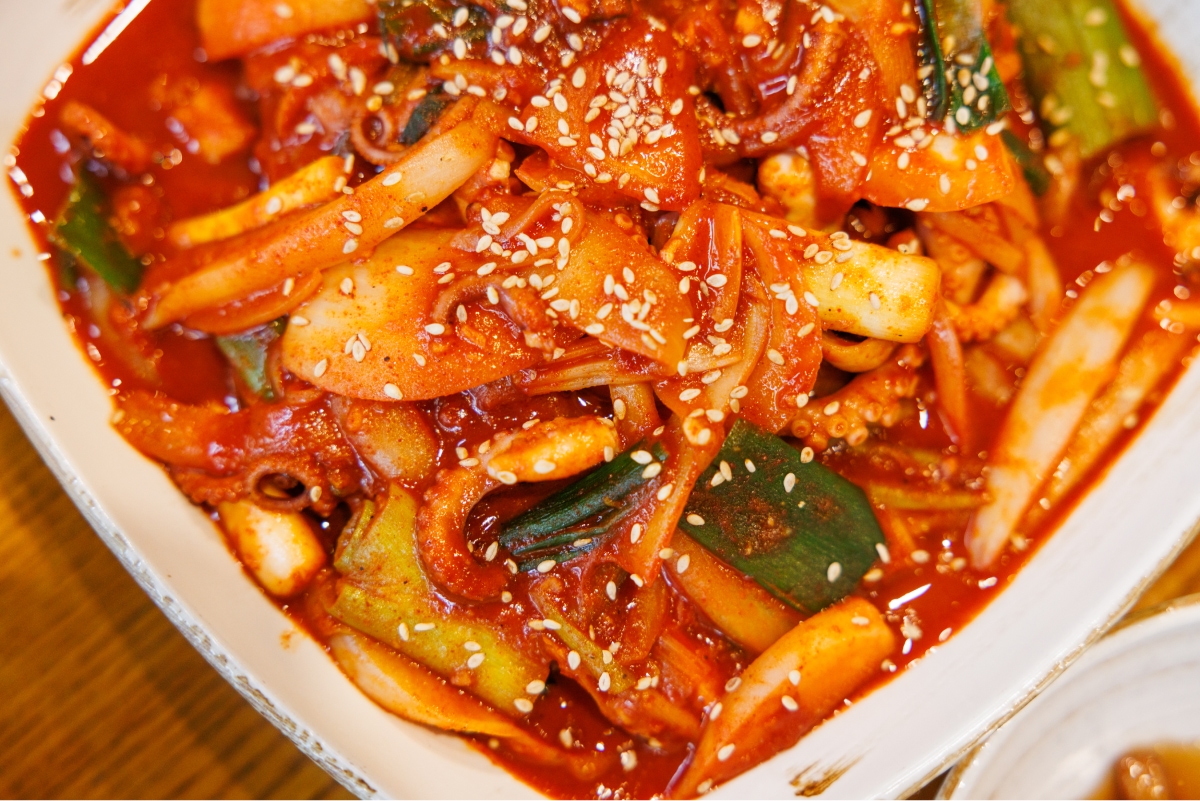

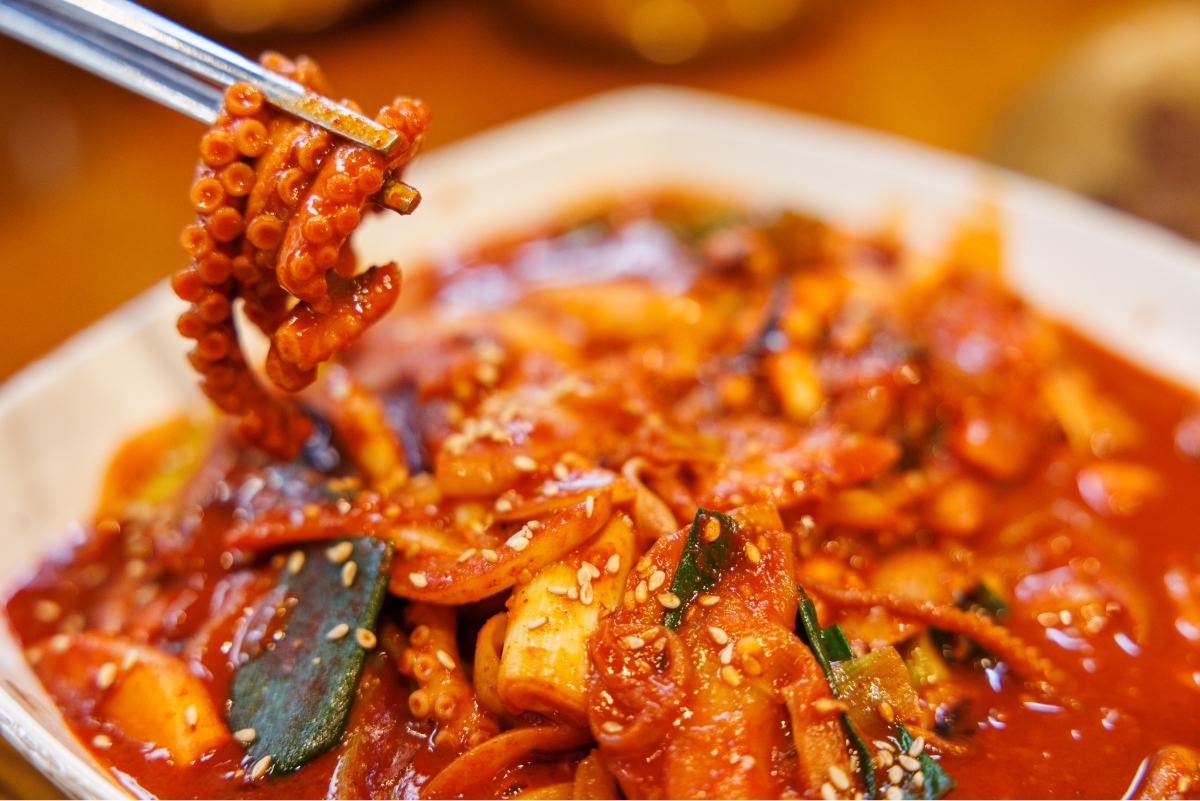
Spicy Braised Chicken: A Flavorful Korean Delight
Spicy Braised Chicken may sound like a simple stir-fry dish, but it’s actually a brothy, braised creation that’s bursting with flavor. A chopped chicken is seasoned with red chili powder, Red Chili Paste, green onion, onion, and garlic, then braised to perfection, resulting in a thick, savory broth. For added depth, you can incorporate ingredients like potato, carrot, and onion. The combination of the deep chicken flavors and the chili powder that has seeped into the tender chicken meat creates a spicy and wonderfully savory dish. Spicy Braised Chicken shares a similar recipe to Indian chicken curry, and it’s often cited as a favorite Korean dish among Indian residents in the country, thanks to its spicy and zesty taste.
Spicy Braised Galbi: A Fiery Korean Classic
Spicy Braised Galbi is a dish that takes the classic Braised Galbi and adds a spicy twist. While traditional Braised Galbi is based on a soy sauce marinade with added sweetness, Spicy Braised Galbi is braised with Red Chili Paste or chili powder, bringing a bold spiciness to the dish. The origins of Spicy Braised Galbi can be traced back to a groggery in the back alley behind a police substation in Daegu’s Dongin 1-dong in 1972, where it was created as a companion dish to makgeolli. The tender, chewy texture of the beef combined with the captivating spiciness of the sauce makes Spicy Braised Galbi a true delight. Additional ingredients like bean sprouts, mushrooms, carrots, and glass noodles can be added to enhance the flavors. If the spice level is too much, a serving of Steamed Eggs or a sweet beverage can help tame the fire on your tongue.

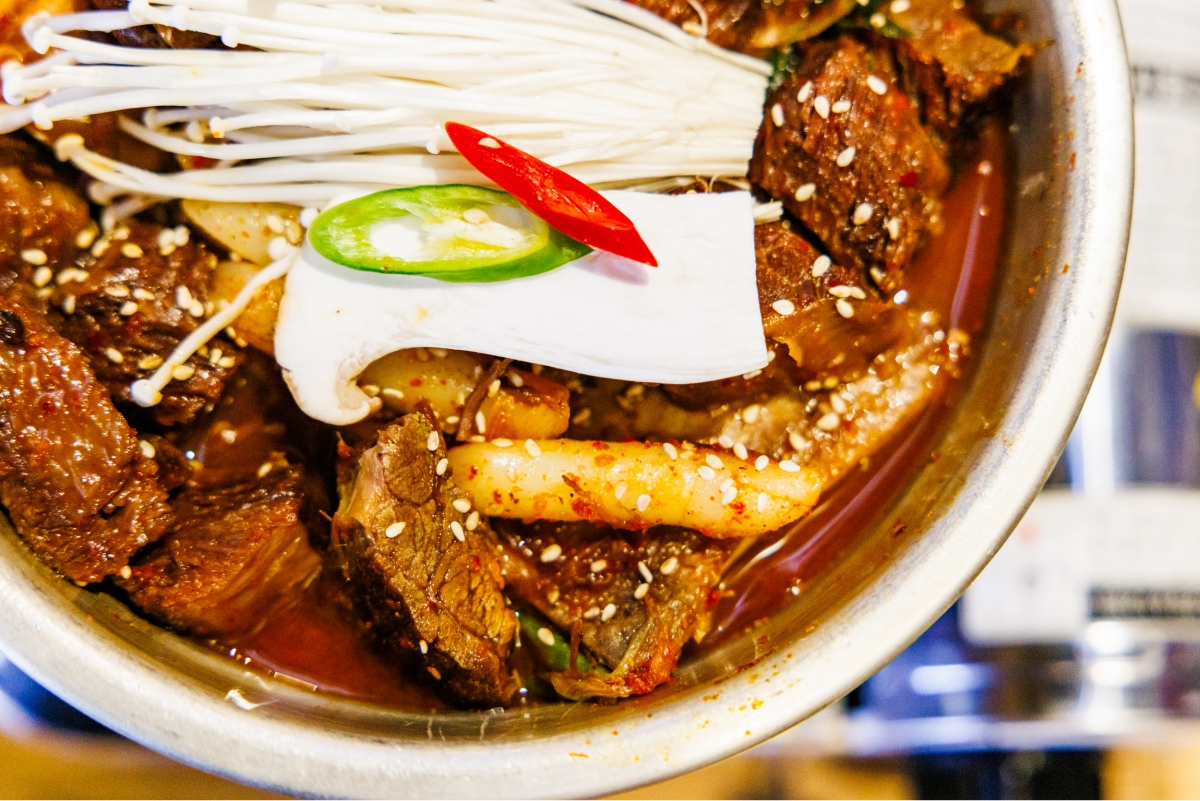

Spicy Pork Cutlet: A Fiery Korean Sensation
Spicy Pork Cutlet was once crowned as the spiciest Korean dish by CNN, and it’s easy to see why. The sauce for this dish is not your typical red spicy sauce – it’s a dark, almost ominous-looking concoction made with the world’s spiciest chili, Indian chili, along with starch syrup and medicinal herbs. This “sauce of death” is so intense that Spicy Pork Cutlet shops often offer special deals to those who can finish the dish, waiving the payment for those brave enough to take on the challenge. However, it’s a rare feat, as the sheer heat of this dish can be overwhelming, even for the most seasoned spice enthusiasts. To enjoy a Spicy Pork Cutlet, you’ll need an unwavering heart and a glass of plain milk to help quench the fire in your belly.
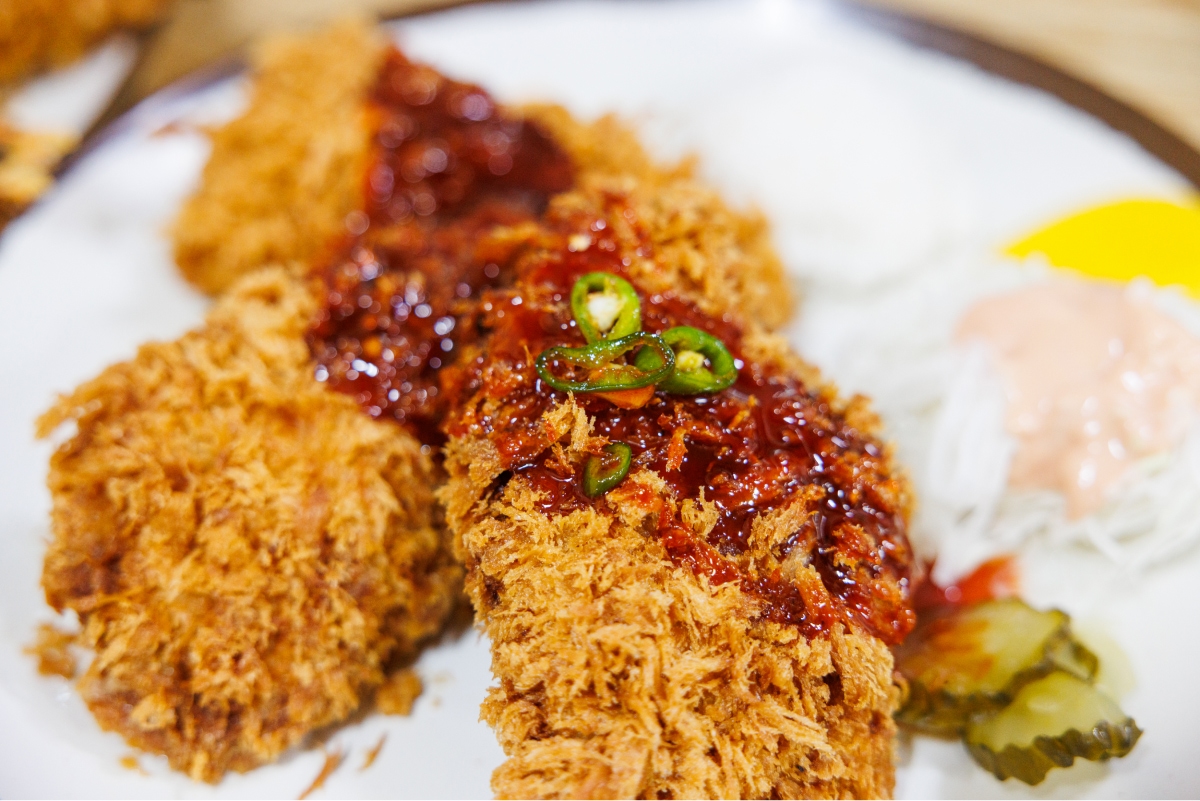
In conclusion, the world of Korean cuisine is a treasure trove of bold, flavorful, and often spicy dishes that are sure to captivate your taste buds. From the versatile and nourishing octopus dishes to the fiery Spicy Braised Chicken and Spicy Braised Galbi, there’s something for every palate. And for the true thrill-seekers, the legendary Spicy Pork Cutlet stands as a testament to the Korean people’s love for intense, unforgettable flavors. Embark on a culinary adventure through these remarkable Korean specialties and discover the unique and vibrant tastes that make this cuisine so beloved around the world.

